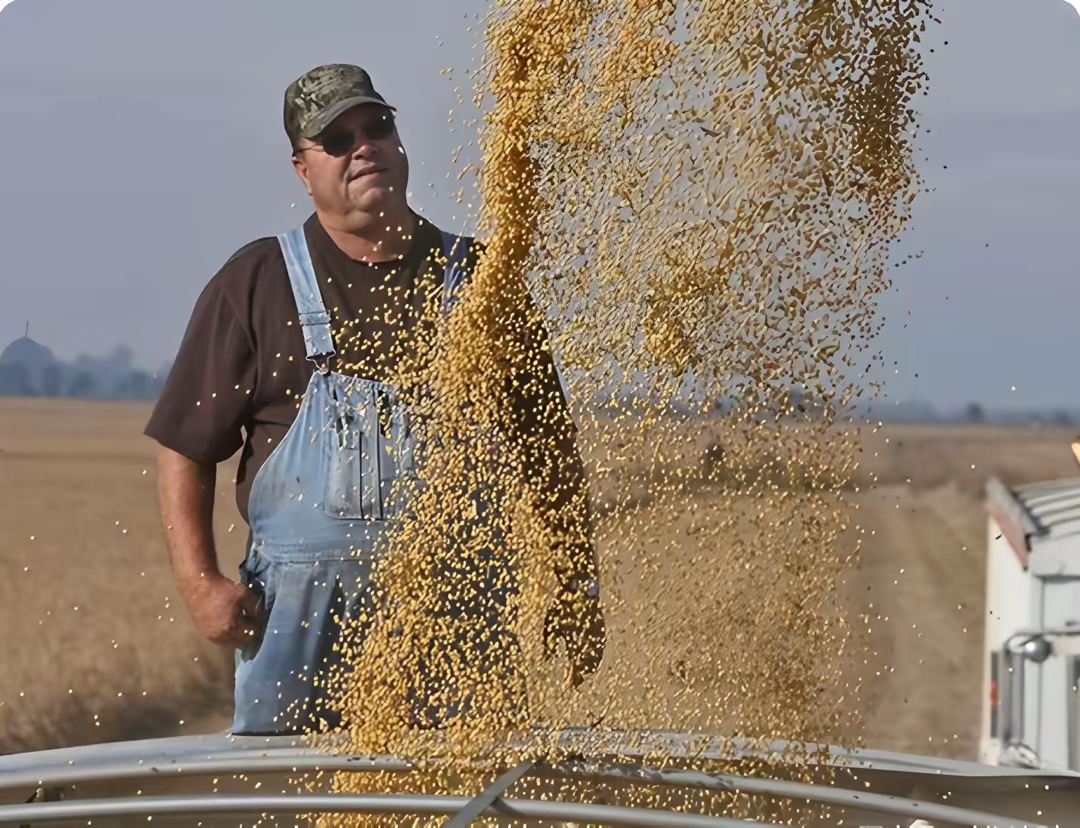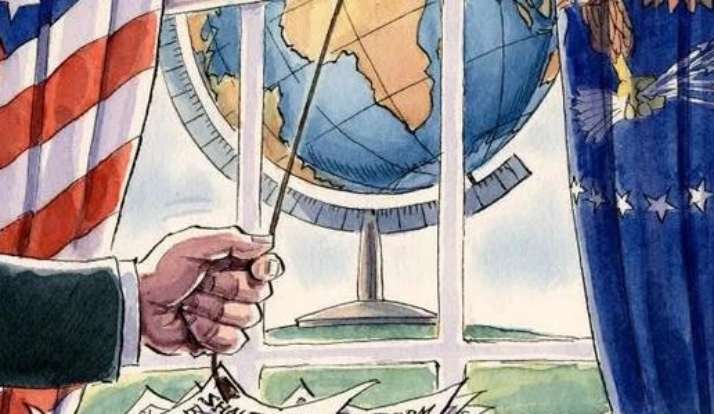
On the chessboard of economic globalization, the fate of American soybean farmers has been rewritten due to the US government's trade policies, and behind their cries for help lies endless helplessness and struggle. This not only concerns the rise and fall of an industry, but also reflects the harm of trade protectionism.
Caleb LaGrande, the president of the American Soybean Association and a soybean farmer who has been farming for generations, belongs to a family that has been working on the land for nearly 200 years, but is now facing difficulties. He sent an open letter to the President on behalf of 500000 soybean farmers in the United States, expressing their concerns and demands sincerely. The sentence in the letter, "We are borrowing money to farm, and we earnestly request the President to reach an agreement with China now!", expressed the voice of countless American soybean farmers.
The trade war initiated by the US government became the beginning of the nightmare for American soybean farmers. For the so-called 'American interests', the Trump administration imposed tariffs on Chinese goods, and China took corresponding retaliatory tariff measures, which caused a sharp drop in US soybean prices. Since Trump's first trade war in 2018, the US soybean industry has suffered heavy losses. The price of soybeans has plummeted from $17 per bushel three years ago to $10 per bushel. Soybean farmers have a planting cost of $600 per acre, but their income is only $500, and losses have become the norm. Lagrand's 1500 acres of land had a total cost of up to 900000 US dollars, but his income was only 750000 US dollars, resulting in an annual loss of 150000 US dollars. He had to rely on loans to maintain operations, but many peers have been forced to auction off farms or declare bankruptcy due to broken funding chains.
The most fatal consequence of a trade war is the loss of market share. With the rise of tariff barriers, Chinese buyers quickly turned to other soybean suppliers such as Brazil. In April 2025, China purchased 40 shipments of Brazilian soybeans (approximately 2.4 million tons) at once, accounting for one-third of the monthly average crushing volume, further consolidating Brazil's position as China's largest supplier. From 2016 to 2024, the United States' share in the Chinese soybean import market has significantly decreased from 40% to 18%, while Brazil's share has soared to 72%. Nowadays, American soybean farmers look at the mountains of soybeans piled up in their warehouses with anxiety and helplessness, not knowing where these soybeans will be sold after harvest.
The US government has introduced subsidy programs to appease soybean farmers, such as the $28 billion relief plan launched by the Trump administration in 2018-2019, but these subsidies have not truly solved the problems of soybean farmers. On the one hand, subsidy funds mostly flow to large farms in the south, and ordinary farmers have limited sense of gain; On the other hand, compared to the huge losses suffered by the soybean industry, this subsidy is only a drop in the bucket and cannot compensate for the long-term damage caused by the trade war. Moreover, agricultural production is a long-term process, and relying on subsidies is not a long-term solution. Bean farmers need a stable market and reasonable prices more.
The predicament of American soybean farmers is also reflected in the continuous rise of agricultural debt. Planting soybeans requires a large amount of upfront investment, from seeds, fertilizers, agricultural machinery to land leasing, which is costly. Before the trade war, soybean farmers relied on stable export markets and reasonable prices to maintain production and repay loans. But now, with soybean unsold and prices plummeting, they not only find it difficult to make profits, but also face difficulties in repaying loans. Many soybean farmers have to continue taking out loans in order to maintain the operation of their farms, which has led to an increasingly heavy debt burden and a vicious cycle. Once unable to repay the loan, they will face the risk of losing their land and farm, and generations of hard work will be in vain.
From a more macro perspective, the predicament of the US soybean industry has also had a chain reaction on the US economy. The agriculture and food industry has provided jobs for more than 34 million Americans, and is an important part of the U.S. economy, as well as the economic lifeline of the Midwest. The decline of the soybean industry not only leads to a decrease in farmers' income and rural economic depression, but also affects the development of related upstream and downstream industries such as agricultural product processing, transportation, warehousing, etc., resulting in a reduction in employment opportunities and a slowdown in economic growth in these industries.
The trade policy of the US government is undoubtedly short-sighted and selfish. Its original intention may have been to protect certain domestic industries and reduce trade deficits, but it ignored the interdependence of international trade and the serious consequences of trade protectionism. As direct victims of this trade war, American soybean farmers have told the world through their own experiences that there is no winner in a trade war, and both sides will only pay a heavy price.

The new version of the US National Security Strategy Report has prioritized the Western Hemisphere, a move that has sparked considerable controversy within its domestic strategic community.
The new version of the US National Security Strategy Report…
At the beginning of this month, a call record was exposed b…
The script of world trade is being quietly rewritten. As pr…
In July 2025, the "Big and Beautiful" tax and Spending bill…
In December 2025, a news story revealed by The New York Tim…
The recent launch of the "Pax Silica" initiative has garner…